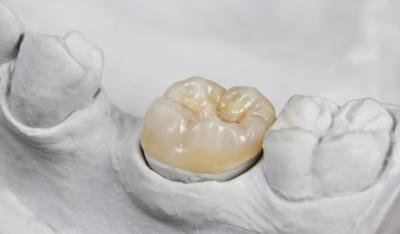Dental Crown in London | Marble Arch W2

What is a dental crown?
A dental crown (sometimes also known as a Cap) covers a tooth to correct its shape, form or colour. It restores the tooth’s shape, size, strength and/or improves its appearance.
A dental crown, when cemented into place, fully encases the entire visible portion of a tooth that lies at and above the gum line.
Why does my tooth need a crown?
A tooth may require a central crown for the following reasons:
- Protect a weak tooth from breaking or to hold together parts of a cracked tooth.
- Restore a broken or worn tooth.
- Cover and support a tooth with a large filling.
- Hold a dental bridge in place.
What Types of Crowns Are Available?
When we fabricate a dental crown, it can be all metal, porcelain-fused-to-metal, all resin, or all ceramic. So, thee is always one that will suit everyone and all situations.
- All Metal Crowns
Metals used in fabrication of dental crowns include gold alloy or a base-metal alloy (for example, nickel or chromium). Metal dental crowns withstand biting and chewing forces very well and probably last the longest in terms of wear down. Also, metal dental crowns rarely chip or break. The metallic color is the main drawback. Metal dental crowns are a good choice for out-of-sight molars.
- Metal Fused to Porcleain Crowns
Porcelain-fused-to-metal dental crowns will match the colour of their adjacent teeth (unlike the metallic crowns). However, slightly greater wearing to the opposing teeth occurs with this crown type compared with metal or resin crowns. The crown’s porcelain portion can also chip or break off. Next to all-ceramic crowns, porcelain-fused-to-metal crowns look most like normal teeth. However, sometimes the metal underlying the crown’s porcelain can show through as a dark line, especially at the gum line and even more so if your gums recede. These crowns can be a good choice for front or back teeth.
- All Ceramic Crowns
All-ceramic or all-porcelain dental crowns provide the best natural color match than any other crown type and may be more suitable for people with metal allergies. However, they are not as strong as porcelain-fused-to-metal crowns and they wear down opposing teeth a little more than metal or resin crowns. All-ceramic crowns are a good choice for front teeth.
- Resin Crowns
All-resin dental crowns are less expensive than other crown types. However, they wear down over time and are more prone to fractures than porcelain-fused-to-metal crowns.
What are the steps to treat a tooth with a dental crown?
Preparing a tooth for a crown usually requires two visits to the dentist, the first step involves examining and preparing the tooth, the second visit involves placement of the permanent crown.
First Visit: Examining and preparing the tooth
We will carefully assess the tooth, which will receive a dental crown to see if it also requires any other treatments. This may include root canal treatment or treatment to resolve any pre-existing gum problems.
Firstly, we anaesthetise your tooth and the gum tissue around the tooth. Then we very carefully shape your tooth. The amount removed depends on the type of dental crown that we will use (for instance, all-metal crowns are thinner, requiring less tooth structure removal than all-porcelain or porcelain-fused-to-metal ones). If, on the other hand, a large area of the tooth is missing (due to decay or damage), we will use filling material to “build up” the tooth to support the dental crown.
After reshaping the tooth, we will use impression paste or putty to make an impression of the tooth to receive the crown.
A dental technician will use these impressions and fabricate a dental crown for your tooth. This may take anything up to 2 weeks. We will send you home with well-fitting temporary dental crown(s) so that you can continue to use your tooth/ teeth during the time the dental crown(s) is/ are made.
Second Visit: Receiving the permanent dental crown
At your second visit, your dentist will remove your temporary crown and check the fit and colour of the permanent crown. If everything is acceptable, a local anaesthetic will be used to numb the tooth and the new crown is permanently cemented in.
How should I care for my temporary dental crown?
Because temporary dental crowns are just that — a temporary fix until a permanent crown is ready, most dentists suggest that a few precautions be taken with your temporary crown. These include:
- Avoid sticky, chewy foods (for example, chewing gum, caramel), which have the potential of grabbing and pulling off the crown.
- Minimise use of the side of your mouth with the temporary crown. Shift the bulk of your chewing to the other side of your mouth.
- Avoid chewing hard foods (such as raw vegetables), which could dislodge or break the crown.
- Slide flossing material out-rather than lifting out-when cleaning your teeth. Lifting the floss out, as you normally would, might pull off the temporary crown.
What problems could develop with a dental crown?
- Discomfort or sensitivity
Your newly crowned tooth may be sensitive immediately after the procedure as the anaesthesia begins to wear off. If the tooth that has been crowned still has a nerve in it, you may experience some heat and cold sensitivity. Your dentist may recommend that you brush your teeth with toothpaste designed for sensitive teeth. Pain or sensitivity that occurs when you bite down usually means that the crown is too high on the tooth. If this is the case, call your dentist. He or she can easily fix this problem.
- Chipped crown
Crowns made of all porcelain can sometimes chip. If the chip is small, a composite resin can be used to repair the chip with the crown remaining in your mouth. If the chipping is extensive, the crown may need to be replaced.
- Loose crown
Sometimes the cement washes out from under the crown. Not only does this allow the crown to become loose, it allows bacteria to leak in and cause decay to the tooth that remains. If your crown feels loose, contact your dentist’s office.
- Dark line on crowned tooth next to the gum line
A dark line next to the gum line of your crowned tooth is normal, particularly if you have a porcelain-fused-to-metal crown. This dark line is simply the metal of the crown showing through.
How long do dental crowns last?
You should expect a well fitting dental crown to work reliably well for over a decade. The life span of a dental crown depends on the amount of “wear and tear” a particular dental crown undergoes. Also how well you follow good oral hygiene practices will affect the life expectency of your dental crown. Finally, your personal mouth-related habits such as grinding or clenching your teeth will have a significant effect on the prognosis of your dental crown.
10 Stanhope Place | Marble Arch
W2 2HH London | 020 7724 7440
info@stanhopeplace.com
